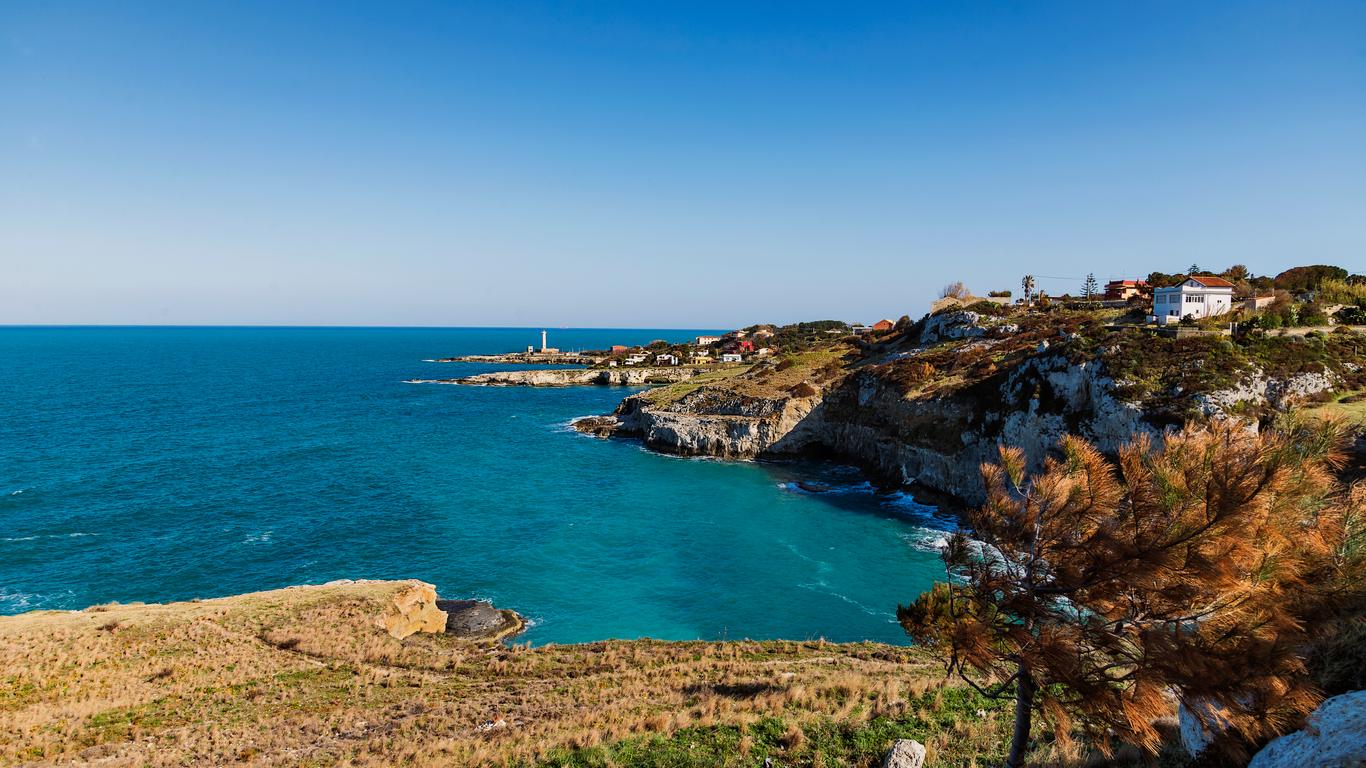Hugging the east coast of Sicily, Augusta is an important harbour and oil refinery port overlooking the Ionian Sea. It was originally founded by the ancient Greeks as the colony of Megara Hyblaea and was transformed into an island town by the cutting of an isthmus in the 16th century.
Things to do in Augusta
In the heart of Augusta is the Duomo di Augusta, which was rebuilt following the collapse of its predecessor during a 1693 earthquake. The cathedral houses a marble altar with bas-reliefs and a wooden pulpit sculpted by a local master, Stagnaro. The Duomo di Augusta is a short stroll from the Chiesa delle Anime Sante del Purgatorio, a beautiful Baroque church with a facade attributed to the Sicilian-born architect Filippo Juvarra.
Dating back to 1232 is the Castello Svevo, a monumental fortification that rises above Augusta’s historic core. It was built to defend the city against coastal raids, with eight towers framing its square plan. Now abandoned, the castle overlooks the Giardini Pubblici di Augusta, where you’ll find a children’s playground and shaded benches for watching the world go by.
Rising atop the easternmost point of Augusta is the Faro di Capo Santa Croce, an active lighthouse constructed in 1859 under the rule of Francis II, the last King of the Two Sicilies. It features a 27-metre-high limestone tower and a restored keeper’s house, from where there are magnificent views across the Ionian Sea. On weekends, locals come to swim at the rocky beaches nearby.
Getting around Augusta
Augusta is around 30 minutes’ drive from both Syracuse and Vincenzo Bellini Catania Airport, which has seasonal flights to destinations across Europe and North Africa. Regular trains connect to the Augusta railway station and the town centre is small enough to explore on foot.





